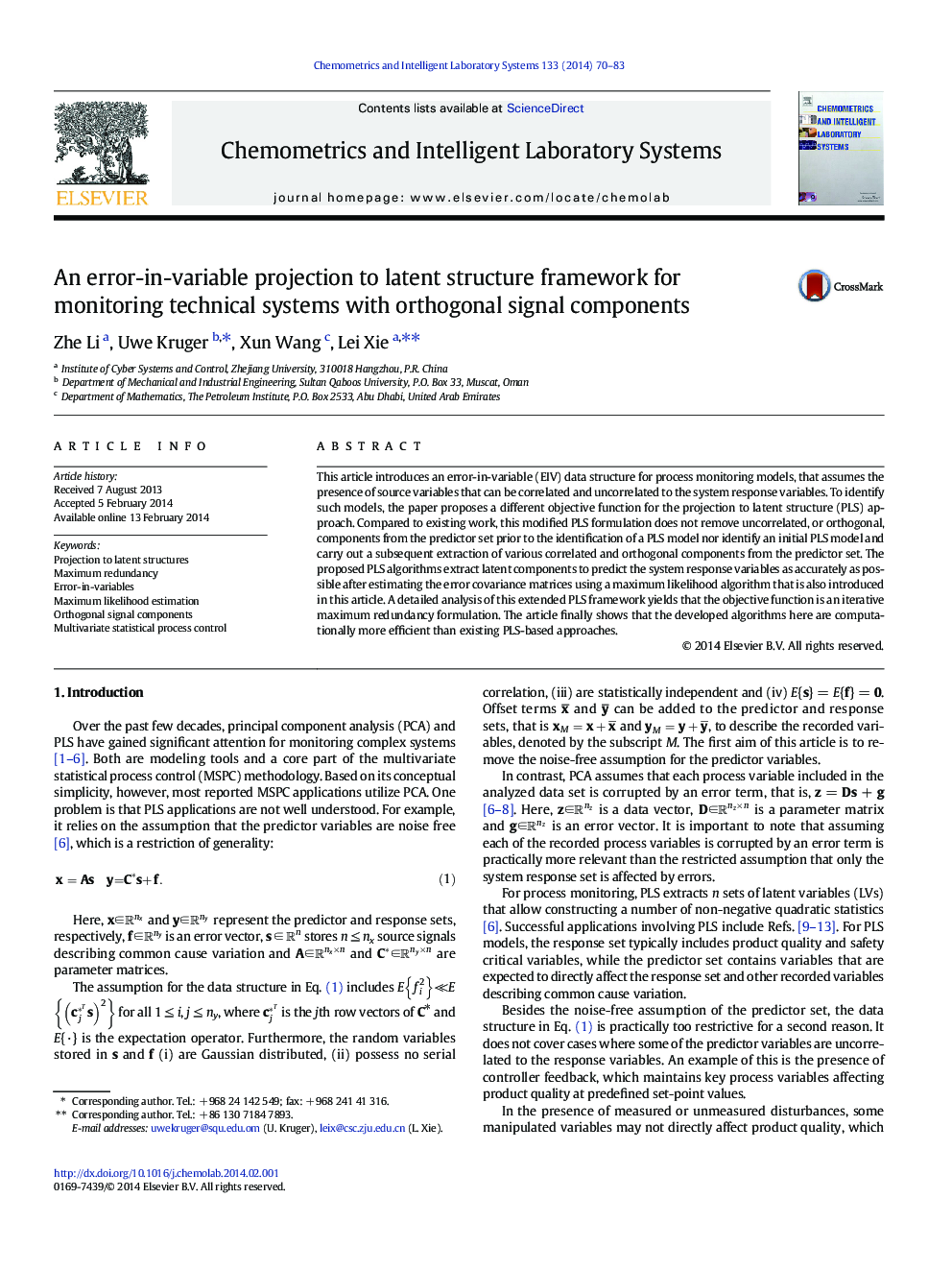| Article ID | Journal | Published Year | Pages | File Type |
|---|---|---|---|---|
| 1180909 | Chemometrics and Intelligent Laboratory Systems | 2014 | 14 Pages |
•We propose a data structure for PLS models based on orthogonal signal components.•We introduce a specific identification method to identify this data structure.•We develop an error-in-variable method to identify PLS models.•We developed different methods to identify the new data structure from existing work.
This article introduces an error-in-variable (EIV) data structure for process monitoring models, that assumes the presence of source variables that can be correlated and uncorrelated to the system response variables. To identify such models, the paper proposes a different objective function for the projection to latent structure (PLS) approach. Compared to existing work, this modified PLS formulation does not remove uncorrelated, or orthogonal, components from the predictor set prior to the identification of a PLS model nor identify an initial PLS model and carry out a subsequent extraction of various correlated and orthogonal components from the predictor set. The proposed PLS algorithms extract latent components to predict the system response variables as accurately as possible after estimating the error covariance matrices using a maximum likelihood algorithm that is also introduced in this article. A detailed analysis of this extended PLS framework yields that the objective function is an iterative maximum redundancy formulation. The article finally shows that the developed algorithms here are computationally more efficient than existing PLS-based approaches.
